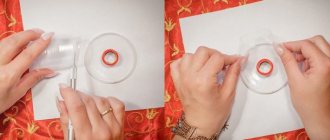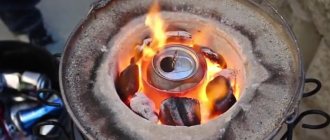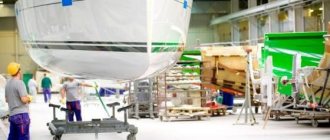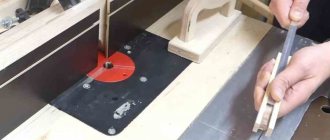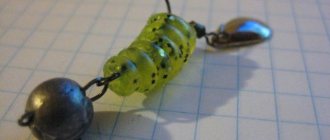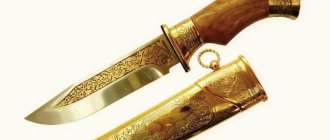- July 4, 2019
- Crafts
- Natalia Penchkovskaya
Soldiers for boys' games can be made from absolutely different materials - from wood and ice cream sticks, from paper and cardboard, cut out of wood or poured into a mold using tin. In this article we will look at how to make soldiers with your own hands. These are simple options that even schoolchildren can handle making.
You'll learn how to quickly create an army out of cardboard toilet paper rolls and paper straws. We will also consider ways to sculpt soldiers from plasticine or clay, and also tell you how to properly pour tin warriors in self-prepared plaster molds.
To make uniforms for a man with a weapon or simply in military uniform, a variety of materials are used. Then the blank needs to be painted in the chosen colors, be it a modern warrior or a soldier of an ancient army. A child can show his imagination and decorate his uniform with any small details.
Depending on the type of base material, gouache or acrylic paints are chosen; tin men can simply be sanded and rubbed with felt so that the soldier shines like a mirror.
How to make soldiers with your own hands from different materials
- July 4, 2019
- Crafts
- Natalia Penchkovskaya
Soldiers for boys' games can be made from absolutely different materials - from wood and ice cream sticks, from paper and cardboard, cut out of wood or poured into a mold using tin. In this article we will look at how to make soldiers with your own hands. These are simple options that even schoolchildren can handle making.
You'll learn how to quickly create an army out of cardboard toilet paper rolls and paper straws. We will also consider ways to sculpt soldiers from plasticine or clay, and also tell you how to properly pour tin warriors in self-prepared plaster molds.
To make uniforms for a man with a weapon or simply in military uniform, a variety of materials are used. Then the blank needs to be painted in the chosen colors, be it a modern warrior or a soldier of an ancient army. A child can show his imagination and decorate his uniform with any small details.
Depending on the type of base material, gouache or acrylic paints are chosen; tin men can simply be sanded and rubbed with felt so that the soldier shines like a mirror.
Popsicle stick soldier
Let's figure out how to make soldiers from thin and flat sticks. To create one person, prepare three identical blanks. You will also need a glue gun to connect them together with the end part. This will be the head, torso and legs.
To create arms, one stick is cut in half and attached to the sides of the body, departing the length according to the size of the head from the upper ends. When the glue has hardened, the resulting figure can be additionally sanded with fine sandpaper and painted on both sides with paints.
Before you make soldiers, think about their purpose. If they are made for a child's play, then you need to make a solid base so that they maintain an upright position. This craft can be made as a Christmas tree decoration or as a pendant on the handle of a children's closet door. For this purpose, a hole is cut out on the top for threading the ring.
Army made of cardboard tubes
You can make an entire army of warriors out of toilet paper rolls or kitchen napkins. The shape of the crafts remains unchanged, cylindrical; variety is introduced by small details of the costume and changes in the appearance of the hussars.
It’s easy to make soldiers at home using the model that can be seen in the photo above. These are old hussars in tunics with cross belts and medals made of colored paper with appliqué. People differ not only in the colors of their uniforms, but also in their age. Some only have a mustache, while others have a long gray beard. It’s also interesting to fantasize about the high cockades on the shako.
Paper soldier made from tubes
Before making a paper soldier, as in the photo below, you need to draw a detailed pattern of the torso and feet, cut out the details of the craft according to the template and assemble them into a three-dimensional structure using PVA glue. The warrior's legs and arms are made by rolling paper into a tube. The head, along with a shako or any military cap, is cut out of cardboard separately and attached to the back of the figure.
This version of the soldiers holds a vertical position well, so a child can move it back and forth across the battlefield or use it for a model for an exhibition at school.
Knowing how to make soldiers from a pattern, you can glue soldiers of different sizes.
For giant versions of outdoor figures, you can use large cardboard sleeves, for example, from linoleum or cling film, and assemble the body from corrugated cardboard.
Plasticine warrior
Plasticine is an excellent material for bringing creative ideas to life. You can sculpt soldiers in any pose, add grenades or machine guns, pistols or a spear to their hands. In this art form, you can use many techniques - smearing and rolling, pressing and joining parts together.
As it hardens, the plasticine figure becomes harder. If desired, you can change the soldier’s weapon and add small details - put on a backpack, binoculars, or bandage him if he is wounded in battle. If the soldier is tired, the plasticine can be easily crushed back into the chest and sculpted into a new battle character.
How to make a tin soldier
There are several ways to cast tin soldiers. This is a soft metal that melts at relatively low temperatures, so such crafts are easy to make at home. Different materials are used as a form.
Many in childhood were engaged in casting right on the street, tamping the dense soil with a little man from a set of friends. Liquid metal was poured into the resulting hole with the contours of a soldier.
After hardening, the excess parts were cut off and it was possible to play “war games”.
It is convenient to make a mold at home from thick rubber or plaster mixture. When it is still soft, the finished little man is placed in it. After hardening, it is removed. The same is done with the second part of the plaster. Then the parts are connected to each other and tin is poured into the hole between the bricks. Usually it is done in the area of the soldier’s legs. All that remains is to polish it and you can play with friends.
We have described several simple ways to make soldiers, try the one you like.
From CDs
An interesting variety of war-themed composition can be made from unwanted CDs. To do this, you will need, in addition to the disks themselves, additional elements - colored cardboard, felt-tip pens, glue.
From colored paper we cut out a star, a flag, a coat of arms or an emblem of any branch of the military and glue it to one side of the CD. The hole in the center should remain free. On the other side of the CD we write a congratulation, a memorable date or something on a military theme.
Tip: it is better to apply a picture with a permanent marker - its durability will increase significantly and accidental erasure will be completely excluded.
This card can be hung in plain sight by using the hole left or threading a ribbon through it.
Another fun craft project is I Am a Patriot. Combine several products and create a model of a war memorial - a flat board as a base, armored vehicles or an airplane on a pedestal, a congratulatory inscription, a national flag and an eternal flame (it can be cut out of red cardboard).
You can take existing complexes (“Motherland”, “Mamaev Kurgan”) as a basis or come up with new ones. This piece will take its rightful place in your home or school!
How to make a tin soldier at home?
Tin is a low-melting metal. It ranks fiftieth in the periodic table. It is quite widespread in nature, in particular, ore for its production is actively mined in the Laptev Sea.
Tin
Man began to use tin back in the Bronze Age. In particular, it was used to produce bronze. Nowadays, it is used as solder, coatings, etc. In addition, tin is used in jewelry and in the manufacture of toys, for example, tin soldiers, etc.
Tin casting process
The melting point of tin is only 231 °C. But its boiling point is within 2,300 °C. The temperature at which the metal will be melted can be achieved at home.
That is, it is quite possible, of course, subject to certain rules and safety precautions, to perform tin casting at home. In industrial conditions, special centrifugal casting machines are used for tin casting.
To make molds, gypsum, alabaster, epoxy resin, silicone and, of course, metal are used.
Tin casting process in industry
Creating a form is perhaps the most important process. First you need to create a sketch of the future model. After this, the model is made from polymer clay. To apply small parts you must use an awl.
Another, no less important process is the production of injection molds. When manufacturing it, it is necessary to ensure that the correct connector is present.
It is needed so that the finished casting can be removed without causing damage to the product itself.
Silicone tooling for tin casting
Making equipment from silicone will require more material and time. This is because it must be subjected to a vulcanization process.
But as a result of all the hassle, multi-turn equipment for casting tin products will be obtained. If the future part is quite complex, then it will be necessary to provide for the presence of embedded parts.
We must not forget about the air ducts; air must escape through them as the mold is filled with tin.
An important element of the design of the equipment is the hole through which the filling will be performed. If it is small, the metal will flow too slowly and the solidification process may begin before it is completely filled.
Before casting begins, the mold halves must be joined together and placed between a sheet of plywood. The sheet must be at least 12 millimeters thick, and the size must exceed the dimensions of the metal mold.
Upon completion of assembly, the entire structure is tied together with a rope.
Two half-forms between sheets of plywood, tied together with a rope
Casting technology is not very complicated; it makes sense to prepare the metal for pouring after the final assembly of the mold. To do this, it needs to be warmed up well. Once a yellowish film appears on its surface, we can assume that the tin is ready for pouring.
If the metal is overheated, a blue or purple film will float on the surface of the melt. The molten metal is poured in a thin stream. In this case, you can lightly tap the housing to remove air.
You can open the mold only after the cast part has completely cooled. To remove the casting, you need to use forceps.
You must be prepared for the fact that the first product received will have some surface defects.
The machining sequence is as follows. First, the flash is removed. So, they call the excess melt that flows into the seam of the mold. A scraper is used for this. Side cutters are used to remove the sprues. For final processing of seams, use abrasive sandpaper with the finest grain (zero).
Tools and materials for casting
Tin is almost an ideal material for casting in both domestic and industrial settings. What materials and tools will be needed to produce the mold and perform casting. To make the mold you will need sealant and plaster. The first will be used to make the equipment itself, and gypsum will be needed to make the frame into which the technological equipment will be installed.
Tin Casting Tools
In addition to the materials mentioned above, you will need simple metalworking tools - files with different sections, pliers, a soldering iron, etc.
Tin casting molds
For the manufacture of injection molding equipment, materials such as gypsum or silicone are used. It all depends on the part and its purpose. The simplest one is gypsum. To make it you will need a wooden box, some plaster and a piece of metal tube.
Creating a snap-in is performed in several steps:
- Preparation of gypsum mixture. It should resemble thick sour cream in appearance.
- The mixture is poured into a pre-prepared box and leveled.
- To obtain a half-mold, you need to take the part and immerse it halfway in the prepared plaster. A similar operation must be performed with the second half of the part. As a result, 2 half-forms will be obtained.
- The halves must be connected, or fastened with locks, or simply tied together with a tight elastic band. A prepared metal pipe must be inserted into the place through which the molten tin will be poured.
In principle, the injection molding equipment is ready for use. The molten tin can be safely poured into the resulting mold.
What is the difference between gypsum forms and others - the main thing is that they have less durability. If their surface is not prepared, then such equipment can withstand one or two cycles.
Main methods of tin casting
In industrial conditions, there are several technologies that make it possible to quickly and efficiently produce castings from tin and its alloys.
The most popular is casting in a centrifugal machine.
The essence of this method is quite simple: molten metal is fed through a system of gates into molds located around the same axis and rotating at a certain speed. Their rotation causes the creation of a centrifugal force, which presses the incoming metal inside the mold.
Before pouring, compositions can be applied to the working surfaces to facilitate the removal of the finished casting from the mold.
How to make a mold for tin products - prodetey.ru
How to make a mold for casting tin soldiers
The mold for casting tin soldiers is made of three components: two parts are plaster, and the third is a metal block. 1. Take a flat block of plasticine and press the sample soldier into it halfway, and press the metal block against the soldier’s stand as shown in Figure 1. 2.
Make a fence from the walls of a matchbox and protect the plasticine blank with it - just stick it into the plasticine as in Figure 2. Make two or three indentations in the plasticine, as in the figure. These holes will be needed when joining the two halves of the future plaster mold. 3.
Spread vegetable oil over the entire surface of the plasticine, the soldier pressed into it, the pits and the metal bar, and begin making a plaster mold. To do this, pour gypsum or alabaster powder sifted through a sieve into a cup and, stirring, pour in so much cold water so that the mixture looks like liquid sour cream. 4.
Slowly and carefully pour the plaster of Paris from the cup into the plasticine blank. In this case, you must carefully ensure that there are no bubbles. Due to the chemical reaction, the plaster will heat up a little and should be given time to cool - about 10-15 minutes. 5. When the plaster has cooled, carefully remove half of the plaster mold and take out the soldier. 6.
The second half of the plaster mold is made in the same way as the first one already made, only instead of a plasticine blank, take the first half of the mold along with the soldier placed in it. Place a metal block on the soldier’s stand and stick a fence with plasticine (Fig. 6).
Lubricate the surface inside the fence with oil, fill it with liquid plaster, and when it has cooled, separate the halves of the mold, carefully remove the sample soldier, and leave the mold to dry for a week. 7. In order to pour tin into a mold, you need to make a sprue in it - a special groove that can be easily cut with a knife from the edge of the mold to the base of the figurine in both of its halves.
Also, with the tip of a knife, you need to scratch scratches-grooves from the edges of the figure to the edges of the shape. These are airs, through which the air displaced by the molten tin will exit the mold. The airs should not be made too wide, otherwise the tin poured through them will flow out of the mold. 8. Before casting, place a smooth sheet of paper between the tightly clenched halves of the mold and a metal block for thermal insulation.
What do we know about tin?
This metal has been known to man since prehistoric times. Tin, like copper, was discovered and mastered earlier than iron! Today, archaeologists are finding tin items dating back to 5000 BC.
The ancient Egyptians went to Persia for tin. The Phoenicians brought tin ore from the British Isles. The ancient Indians also actively worked with this metal.
At one time, bronze, a strategically important metal for all mankind, began to be produced from an alloy of tin and copper.
Tin is a fairly malleable and soft metal with which you can work perfectly and make the most complex finishes from it. The silver-gray tint and noble matte shine make tin art products aristocratically majestic and aesthetically attractive.
Today, tin is widely used in jewelry alloys. Designer jewelry made of tin looks like real works of art - stunning medallions and bracelets, pendants and rings.
Tin is hypoallergenic and absolutely harmless to the body. This is one of the purest metals, so jewelry made from it is of high value. Pewter jewelry is often plated with gold or rhodium alloy, which gives it even more beauty and shine.
Designers of the world's leading brands do not forget to include this ancient metal in the best examples of their collections. Such jewelry is very practical - you can wear it for years without taking it off. Tin is not afraid of corrosion; you can swim in the shower and in sea water.
Jewelry containing tin is a practical and stylish gift!
Tin is ruled by Jupiter. The energy of metal is solemn and festive. Symbolizes the rule of law, material wealth, and the authority of its owner. Strengthens the energy of people whose lives are dedicated to duty of service - to the state, society, their people.
Pure tin is recommended to be worn by patriotic girls with an active civic position. This is the metal of spiritual and social leaders, as well as people with an active and stable cosmogram: Fire-Water, Fire-Earth, Earth-Fire.
Tin favors Sagittarius, Taurus, Leo, Pisces and Cancer, as well as balanced representatives of the Aries sign. It is not recommended to wear “air” signs often. If your patron planet is the Sun and Venus, also feel free to choose tin jewelry.
But if Uranus, Mercury and Pluto dominate in your cosmogram, use tin extremely carefully.
Homer also wrote about tin. There are mentions of this metal in the Bible (4th book of Moses). In ancient Rome and ancient Greece, tin was highly valued and was available only to the wealthy classes.
In ancient times, excellent tin figurines were cast on religious and secular themes. It was believed that the spirits of Saints lived in them.
Hellenic religion and culture attributed tin figurines to the guardians of the home and hearth, so they were in every home and, of course, in temples.
It is curious that for many centuries, Christian church relics, both in Europe and in Russia, were most often stored in tin boxes.
In ancient times, castings with the finest detail were made from low-melting tin. Low-relief openwork stripes and magnificent figured tin plaques were used to decorate wooden frames, mirrors, the walls of caskets and caskets, cabinets, frames for icons, etc. The top and bottom of the icon rows in the Annunciation Cathedral of the Moscow Kremlin are covered with patterned openwork tin.
The main proof of the absolute harmlessness of tin is the widespread use of the metal in the manufacture of tableware.
In the Middle Ages, tin dishes and household utensils made of tin were evidence of the prosperity and financial well-being of the owners of the house. Pewter dishes with elaborate engravings adorned the royal tables.
In the era of Peter the Great, this was a mandatory attribute of table decoration for representatives of the nobility. Today it can be seen in the history museums of St. Petersburg.
Pewter cookware has no smell or taste. Unlike other metals, tin does not rust. Over time, the metal fades slightly, acquiring a pleasant velvety tone. Antique tin tableware is still in demand among collectors today, especially in Europe.
Tin Scream
A characteristic phenomenon has been noticed - when bending a bar of pure tin, you can hear a sound that is very similar to the creaking of snow underfoot in frosty weather. This sound is called a “tin scream.” It indicates the purity of the metal. If you add a little of any other alloy to the composition of tin, then you will no longer hear the tin cry.
Metal professionals often use this method to determine the purity of tin. Melodic sounds generated by tin can be heard in the ringing of bells - this metal is almost always included in the composition of copper and other alloys that are used to cast bells. Also, tin pipes give birth to divine organ music.
The magical power of tin
Tin figurines originally had magical and sacred meaning. They were passed on to newly minted oracles and priests during the initiation rite, which made it possible to interact as harmoniously as possible with the elements and energies of the Earth, to penetrate the secrets of nature carefully and carefully, maintaining physical and mental balance.
Making tin soldiers at home
Are you here
Today, tin is a common metal. However, in the 16th and 17th centuries, it was quite rare and valuable, so Russia bought it from other countries. Tin was used to coat iron products to protect them from rust.
From this metal, Russian craftsmen created dishes with relief patterns, since soft, pliable tin could easily be processed with a chisel. After casting the product, the master decorated it with intricate patterns or an engraved inscription.
Today, the Moscow Historical Museum has various examples of tin utensils that have been preserved from ancient times.
Briefly about malleable tin
Metal tin has such a crystal structure that when it is bent, the metal crystals crunch as a result of friction against each other. This crunch is a distinctive feature of pure tin from its alloys, which do not emit sounds when bent.
And our article today is about boys’ toys. It is probably difficult to find a boy who did not play with soldiers as a child. In the minds of most of our contemporaries, they, that is, soldiers, are perceived only as children's toys.
But, firstly, this is an overly simplified approach, and secondly, many famous people, already quite adults, were not ashamed of their passion for small toy warriors.
Their list includes the French monarchs Louis XIV, Napoleon I and Napoleon II, Russian commander Alexander Suvorov and his contemporary Emperor Paul I, German composer Johannes Brahms, English writer Robert Stevenson, English Prime Minister Winston Churchill and many others, famous and less famous personality.
Toy soldiers - ancient toys
The history of the soldier goes back more than 4 thousand years. The oldest of them were found in the tombs of ancient Egyptian pharaohs. Made of wood, the figurines represented the guards protecting the deceased ruler in the afterlife.
The terracotta guard from the mausoleum of the ancient Chinese emperor Qin Shi Huang is known throughout the world. The full-length figures of his bodyguards are made with the highest detail, and the face of each is so individual that there is not the slightest doubt about the portrait resemblance.
In the Middle Ages, European kings and nobles became interested in playing soldiers. This was perhaps the only social stratum that could afford such pleasure, because the material for making figurines was most often precious metals. The games themselves had tactical and strategic aspects - in them, future commanders learned the basics of controlling military units.
In the XVII – XVIII centuries. More than one self-respecting royal court could not do without a collection of miniature warriors. And at the beginning of the 19th century, toy soldiers finally became available to the general consumer and reached the masses. This is connected, oddly enough, with the spread of cheap earthenware. Before this, most European tableware was cast from tin.
But earthenware technology turned out to be much more economical, and tin foundries simply could not stand the competition. In search of a new market, they turned to the production of tin figurines. And so the textbook tin soldier was born.
This happened in the German city of Nuremberg, and the first soldiers among collectors are called that: Nuremberg miniature.
Remember, Andersen: from one tin spoon - 25 soldiers? If you compare it with the products of modern factories, you will be surprised at the size of the spoons of that time. But surprise will be premature: the spoons of that time were no larger than the spoons of today.
But the soldiers, on the contrary, were inferior in parameters to their descendants at the beginning of the 21st century. The Nuremberg figures were flat, no thicker than 3 mm, and the height of the foot soldier was approximately 30 mm.
So it's no surprise that one spoon yielded two dozen tin-resistant ones.
Subsequently, three-dimensional figures appeared, more interesting, but also more expensive, and the most expensive among mass products were made completely collapsible. Russian artist of the turn of the 19th – 20th centuries. Alexander Benois recalled that he perceived the appearance of just such collapsible soldiers as a real holiday.
In the twentieth century, the range of raw materials for the production of toy soldiers expanded significantly due to polymer materials. After World War II, toy soldiers became one of the most popular items on the toy market.
During the same period, military-historical wargames (military-tactical games with soldiers) were gaining popularity. Unlike similar games of the Middle Ages and Modern times, they are now dedicated to specific events in military history, be it the Spartacus uprising or the Battle of Stalingrad.
The main contingent of wargamers are not children, but young people aged sixteen and older.
At the same time, collecting soldiers is also developing - both ancient ones from a hundred and two hundred years ago, and modern ones, produced specifically for collectors.
Be that as it may, the spirit of Andersen’s soldier did not burn out in the flame of the stove, but continues to warm the hearts of millions of “soldiers” around the world.
Kononko Yulia
DIY soldiers at home
For those who want to make soldiers for children with their own hands, there are different methods and materials. You can sculpt soldiers yourself from plasticine, clay , or even cold welding mass. Sergey Osipov shows how to sculpt soldiers from “cold welding”:
Try to repeat all the steps, and then you may end up with soldiers that look like these figures by amateur sculptor Sergei Kiselev:
Here is a video about the author of this plasticine army (more than 2000 soldiers):
They also make soldiers from wire , very detailed instructions here: www.lobzik.pri.ee/modules/news/article.php?storyid=404
Well, those who want to cast their own metal soldiers can first look at the instructions:
paper soldiers more carefully. They can be flat, for example, like this:
Or voluminous, like our soldier made from candy wrappers.
But about wooden soldiers (from the book “Dolls” by V.S. Goricheva):
Photo from the youngest participant in the competition and the first man among the participants in all the competitions on my blog. Meet Arkhangelsky Stepan , 11 years old.
Stepan lives in the city of Kavalerovo and, as befits boys, is not indifferent to war games. He loves to sculpt knights and all sorts of warriors from plasticine. Basically, he does this in the children's group at the Svetlitsa club.
The description of the work is short: you take plasticine of different colors. Stepan sculpts without a base. Tearing off the mass in small pieces, he creates the required shape, looking at the picture.
And it turns out this knight:
How to make soldiers from plasticine and wire is written in the book “Dolls” by V.S. Goricheva:
And another step-by-step master class on sculpting a soldier from plasticine:
On the topic of plasticine soldiers, I found this amazing video:
And this is a Red Army soldier made of fabric, a sewing pattern from the album “Art in Everyday Life”:
In general, you can make soldiers with your own hands or buy ready-made ones.
The main thing is that they remain toys in the hands of boys and adults, and that people do not become toys in the hands of the rulers of this world.
In order not to forget the page address and share with friends, add to your social networks:
More interesting:
February 23, DIY toys
Patriotic crafts for the holidays
Things you create yourself can be a good gift on February 23rd or decorate your home by May 9th. During this period, schools hold a crafts competition “I am a Patriot”, in which students demonstrate their creations on military-historical themes.
How to make a tin soldier at home
How to make a tin soldier at home
| Tin soldiers are boys' favorite toys of all times, but what if you only have one soldier of a certain shape, but you need several of them for play or for your collection? In this case, you can try to make them yourself, although this will require a lot of patience and effort. How to make a tin soldier at home? Read these instructions, look at the pictures and try to make it. If you try, you should get a soldier. In order to make a new tin soldier, you will need a ready-made soldier, as a sample. If it is painted, you need to wash off the paint from it with acetone, and then start making a mold for casting. | Tin soldiers are boys' favorite toys of all times, but what if you only have one soldier of a certain shape, but you need several of them for play or for your collection? In this case, you can try to make them yourself, although this will require a lot of patience and effort. How to make a tin soldier at home? Read these instructions, look at the pictures and try to make it. If you try, you should get a soldier. In order to make a new tin soldier, you will need a ready-made soldier, as a sample. If it is painted, you need to wash off the paint from it with acetone, and then start making a mold for casting. How to make a tin soldier at home, casting a soldierTo cast a figurine of a soldier, find a clean jar (suitable for Vaseline) and use pliers to bend it into a ladle shape (as in the picture). From such a ladle it will be more convenient to pour liquid tin into the mold. Attach pliers to the ladle instead of a handle, put on a mitten or glove and carefully melt the pieces of tin in it on the stove. When the tin melts, firmly hold the two halves of the mold folded together in your hand (they should be held with the sprue facing up) together with a metal bar (as in the picture) and pour the liquid tin into the mold. DO THIS CAREFULLY, DON'T SPILL MOLTEN TIN ON YOUR HANDS OR LEGS, DON'T ACCIDENTALLY SPLASH IT IN THEIR FACE OR GET BURNED!!! Then let the tin cool well, carefully open the mold and the tin soldier is almost ready. All that remains is to remove the excess with nippers and process the figure with a file. If the figurine is unsuccessful, then it can be melted and the soldier is cast again. |
A toy from childhood
A homemade toy has always been an excellent alternative to an expensive plastic typewriter or doll, which will be thrown into the far corner anyway. Therefore, it is very important to show the child that a toy has a price: the best way to do this is by offering to create it yourself, spending personal time and putting in a lot of effort.
Thus, the popular paper soldiers, which can be sculpted in dozens, inventing more and more new characters, are an ideal toy for noisy boys. The most important thing is that this toy is created from improvised materials that everyone has in the house, and since it is very easy to make a paper soldier, even small children can handle it.
